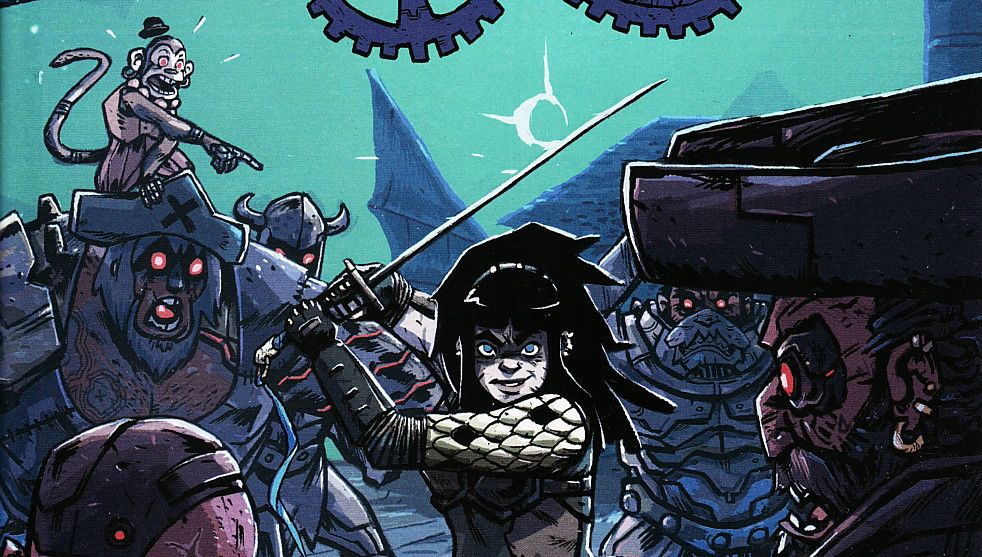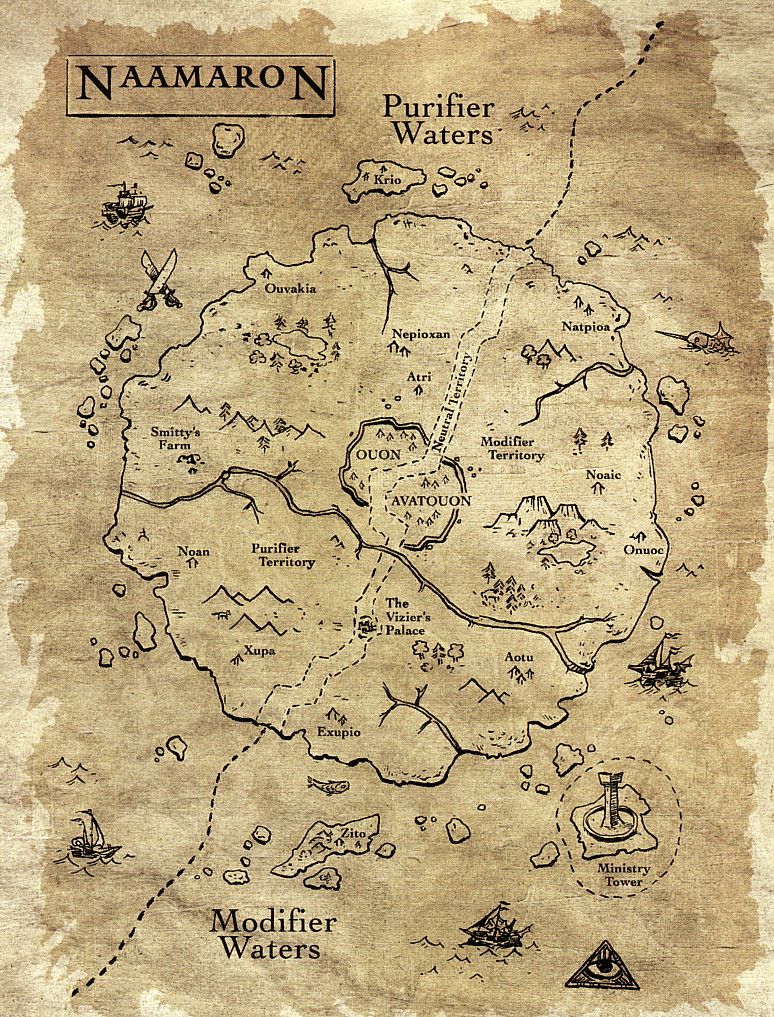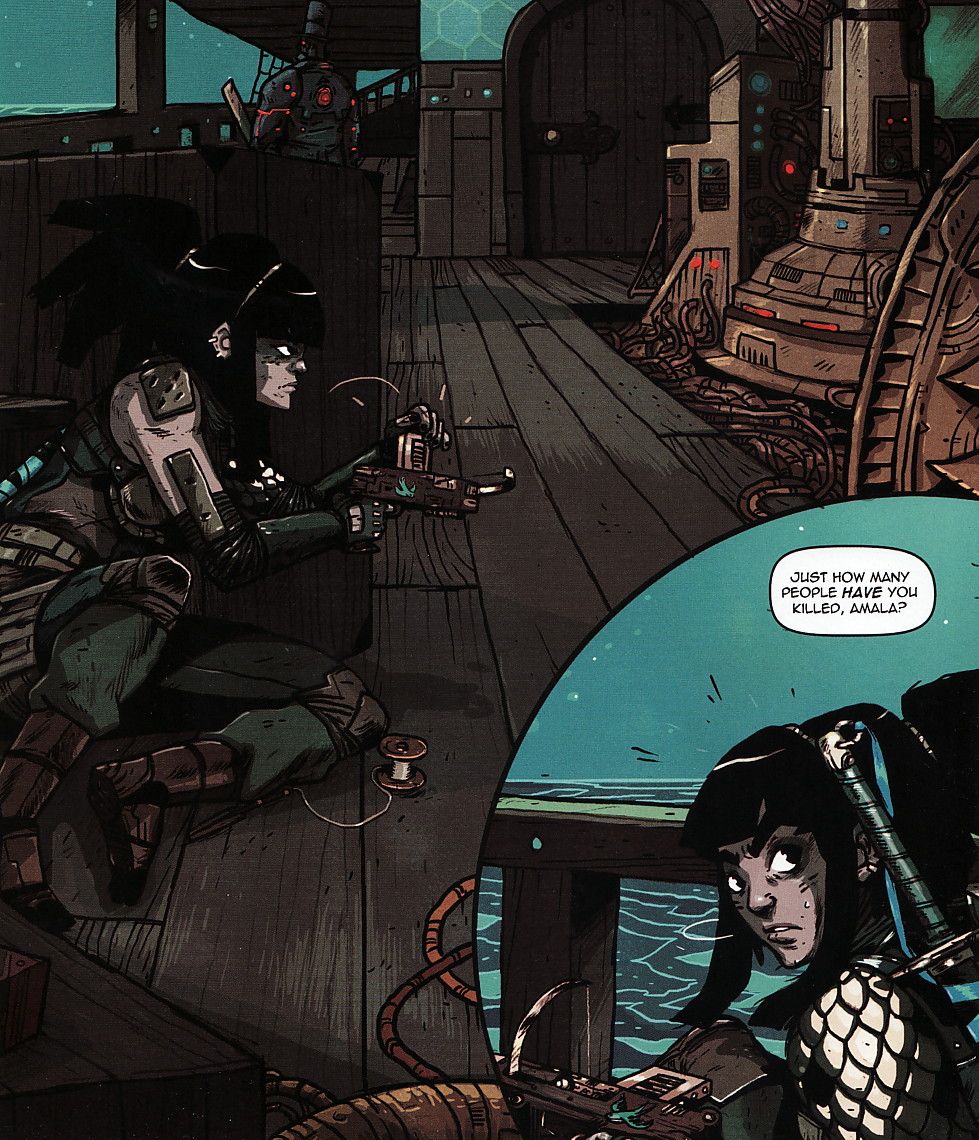The ugly truth is that I can’t afford Dark Horse Presents. Not without making cuts to my pull list that I just don’t want to make. Fortunately, publisher seems to understand this, and is making it easy for me with its zero-issue program, collecting stories from DHP into one-shots that may or may not lead into ongoing series. I’m able to keep up with some of my favorite creators and characters this way in a format I enjoy, while also discovering some new stuff like Steve Horton and Michael Dialynas’ steampunk/fantasy comic Amala’s Blade.
A couple of things attracted me to the one-shot right away: its sword-wielding heroine, and Dialynas’ art. The look of the comic combines the expressive designs of someone like Faith Erin Hicks with the European-influenced grittiness of maybe Simon Roy. There are also cyborg pirates and a monkey in a derby, but I never know how much I can trust those things. Besides the derby-wearing primate that ripped me off in St. Augustine that one time, it’s easy for writers to throw gimmicky concepts into a story just to elevate the Awesomeness Quotient. It’s a whole other thing to be able to integrate those concepts into the world in a believable way and make them work for the story. Horton’s script does that not just with the crazier story elements, but with the genre itself.
More often than not, steampunk is a setting, not a genre. Most “steampunk” stories I read are that way only because someone decided to throw in some goggles, gears and maybe an airship or two. In Amala’s Blade, Horton and Dialynas explore the very idea of steampunk, and in the process call into question its relevance. It’s tough to tell after one issue, but I think this doubting is intentional.
You can tell from the map on the inside-front cover that the world of Amala’s Blade is divided into two factions: Purifiers and Modifiers. Much is yet to be revealed about these groups, but in the one-shot’s back matter, Horton suggests that Purifiers “eat a lot of home-cooked meat and potatoes,” while Modifiers “eat awesome processed food.” Marry that with the cyborgs and I suspect that Modifiers are all about exerting their influence on the world, while Purifiers are dedicated to returning the environment to a natural state. Maybe I don’t read enough steampunk (or the right kind of it), but that’s a great approach to the genre that I haven’t seen before.
What confuses me though is an implication by Dialynas in the back matter that the Purifiers vs Modifiers dynamic can also be described as steampunk vs. cyberpunk. Please edumacate me in the comments, but I don’t see a huge thematic difference between those two genres. Isn’t it mostly aesthetic? Both hold up technology as a reason for optimism about human potential, but the kind of technology is different and steampunk seems to be less overtly anarchistic while also placing a higher regard on Victorian-era morality like proper manners. When it comes to modifying one’s environment (or self), however, don’t both genres/movements advocate for that?
Of course, I could be entirely missing the point of what the Purifiers are about. Regardless, what’s cool is that Horton and Dialynas have me thinking about all this stuff and how it relates to my attitudes about the environment today. How on board am I with humanity's exerting its influence over the world through technology? That's a powerful question and I'm glad for the opening to ponder it. While also enjoying mechanized buccaneers and hat-wearing monkeys.



